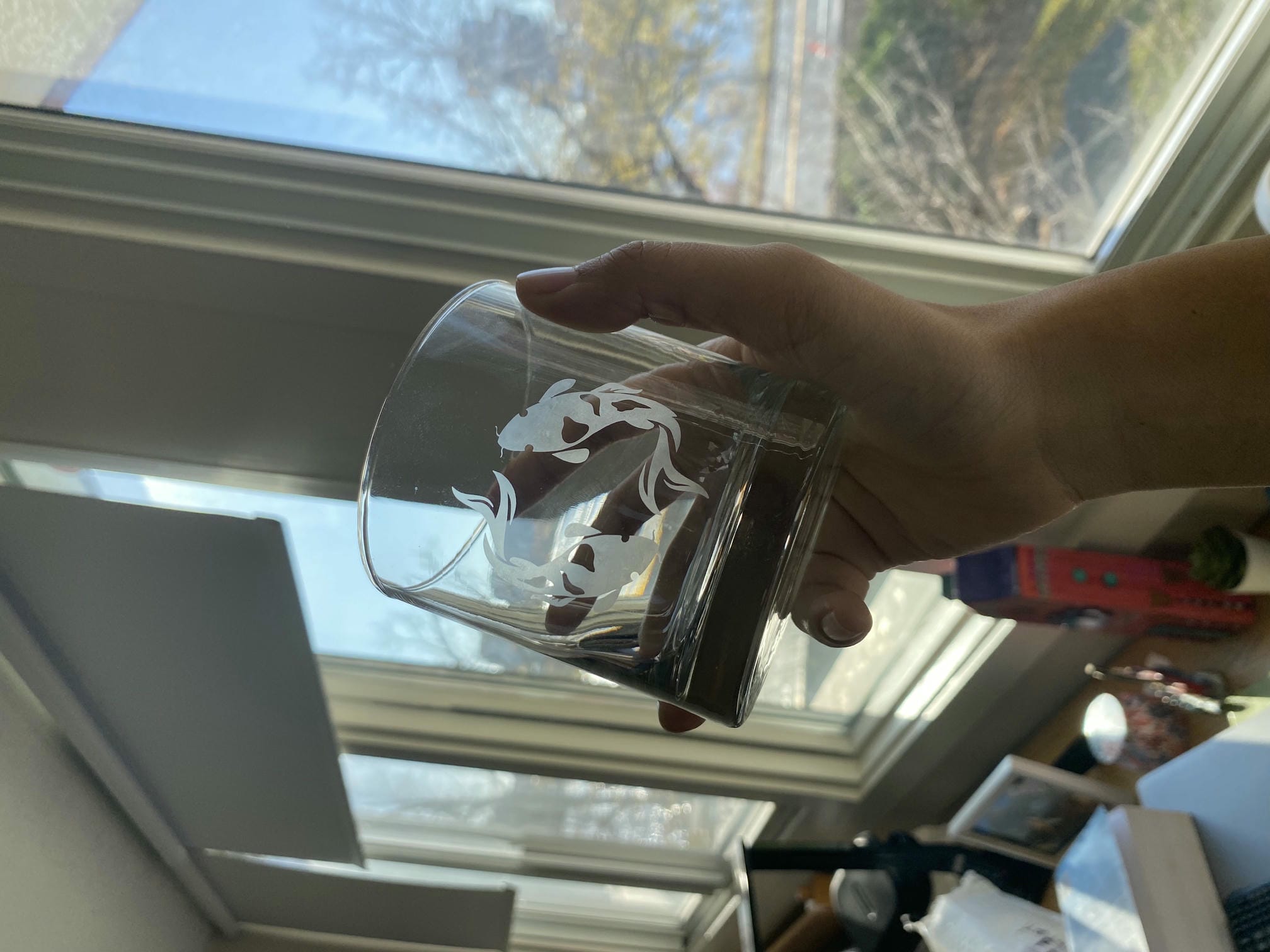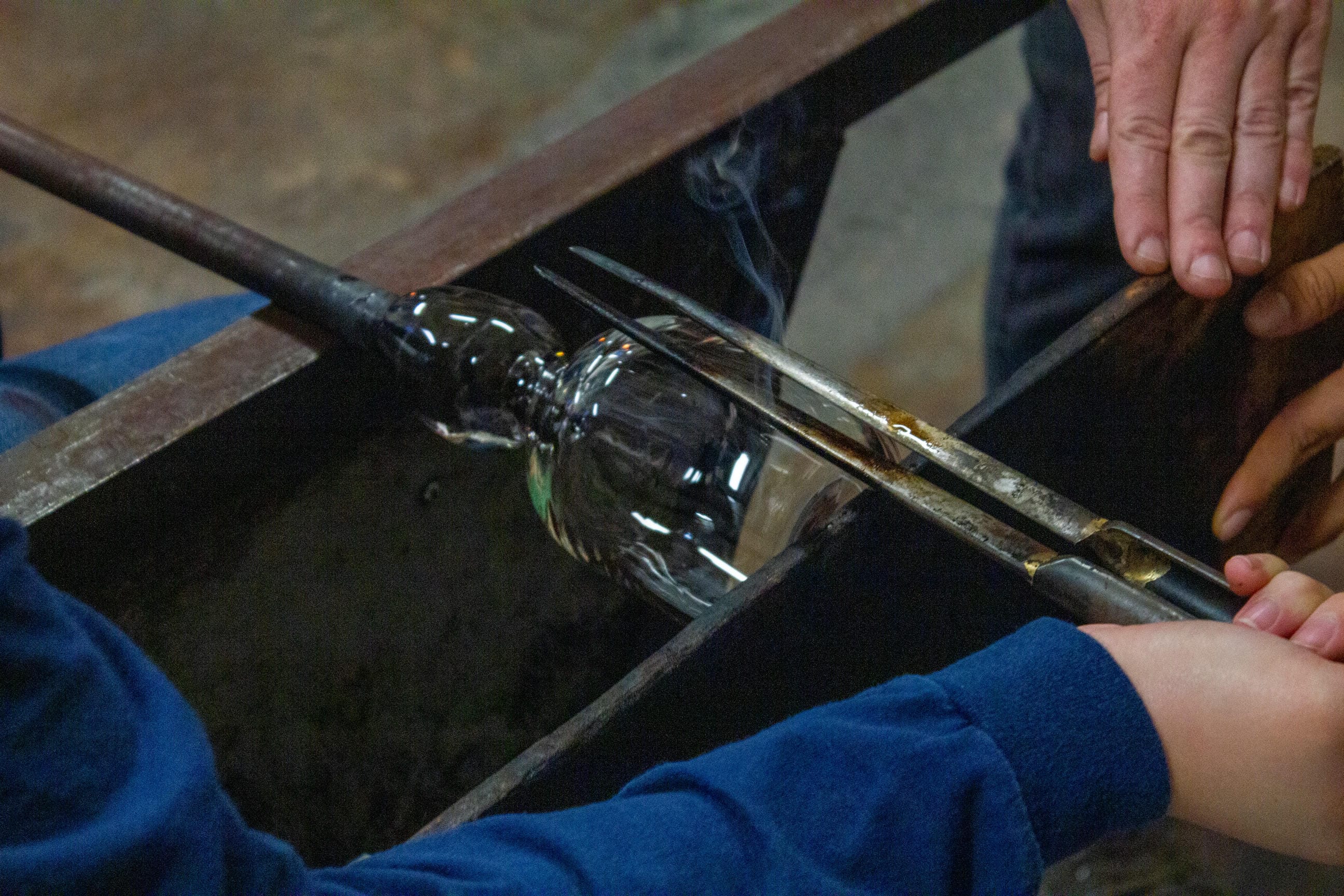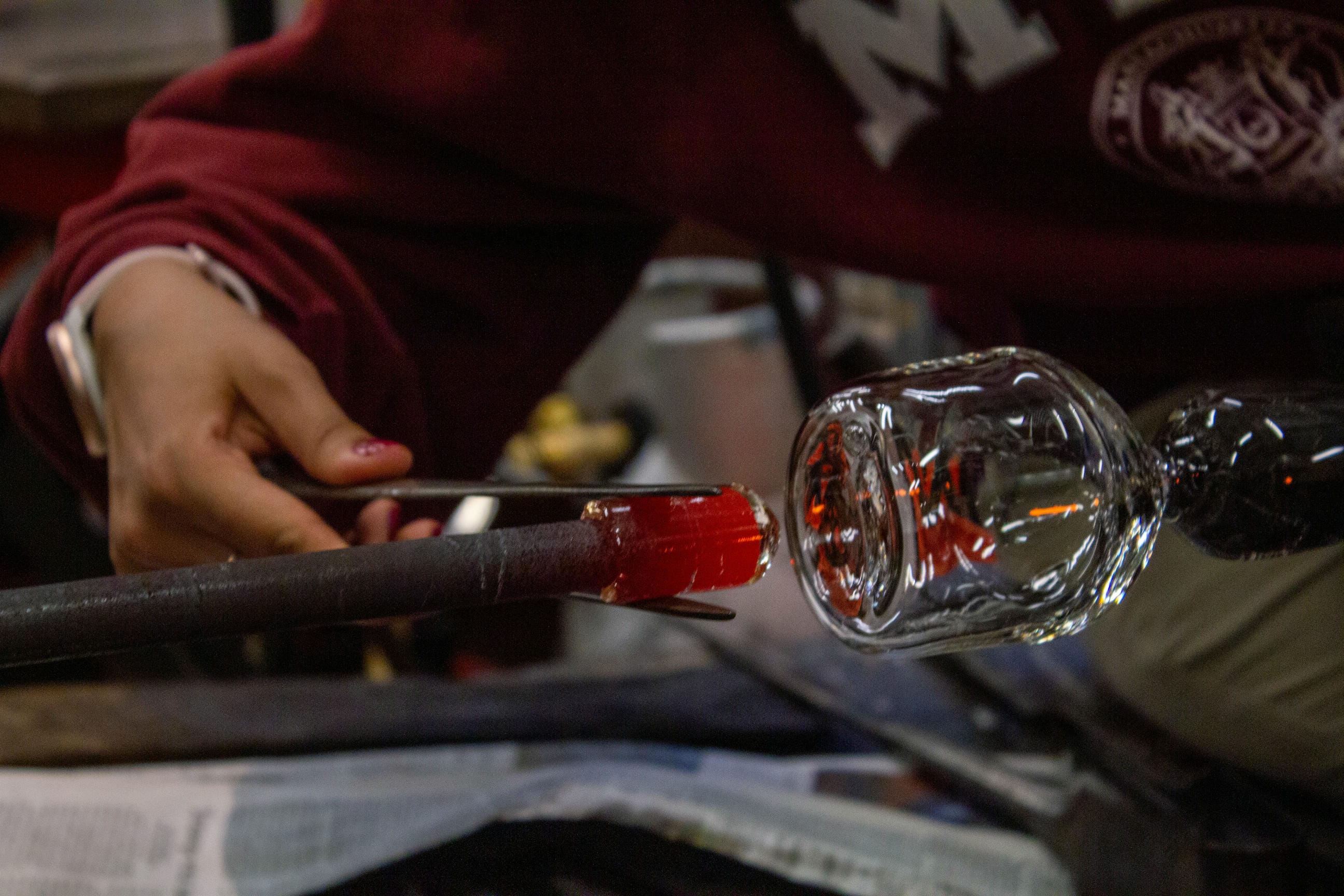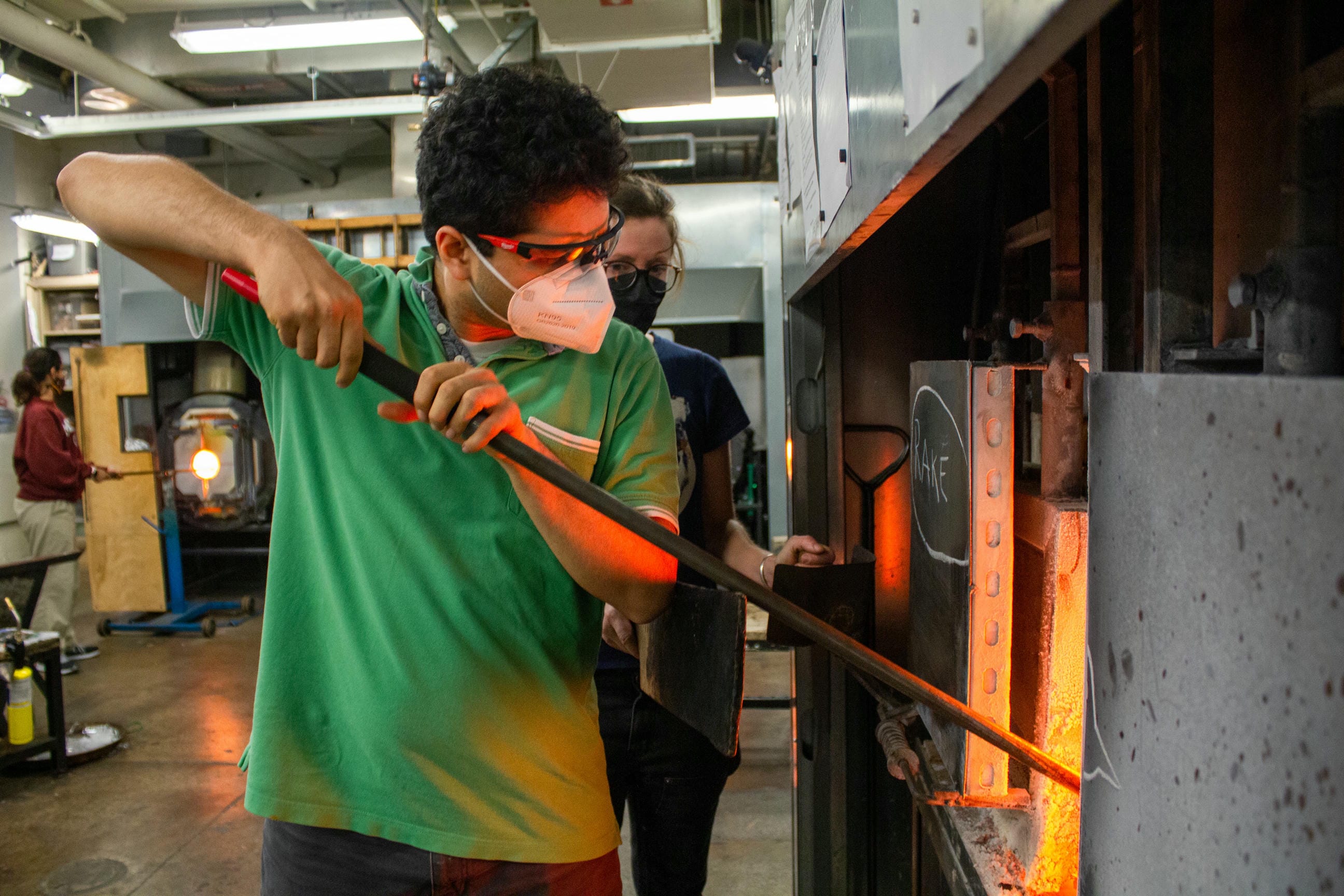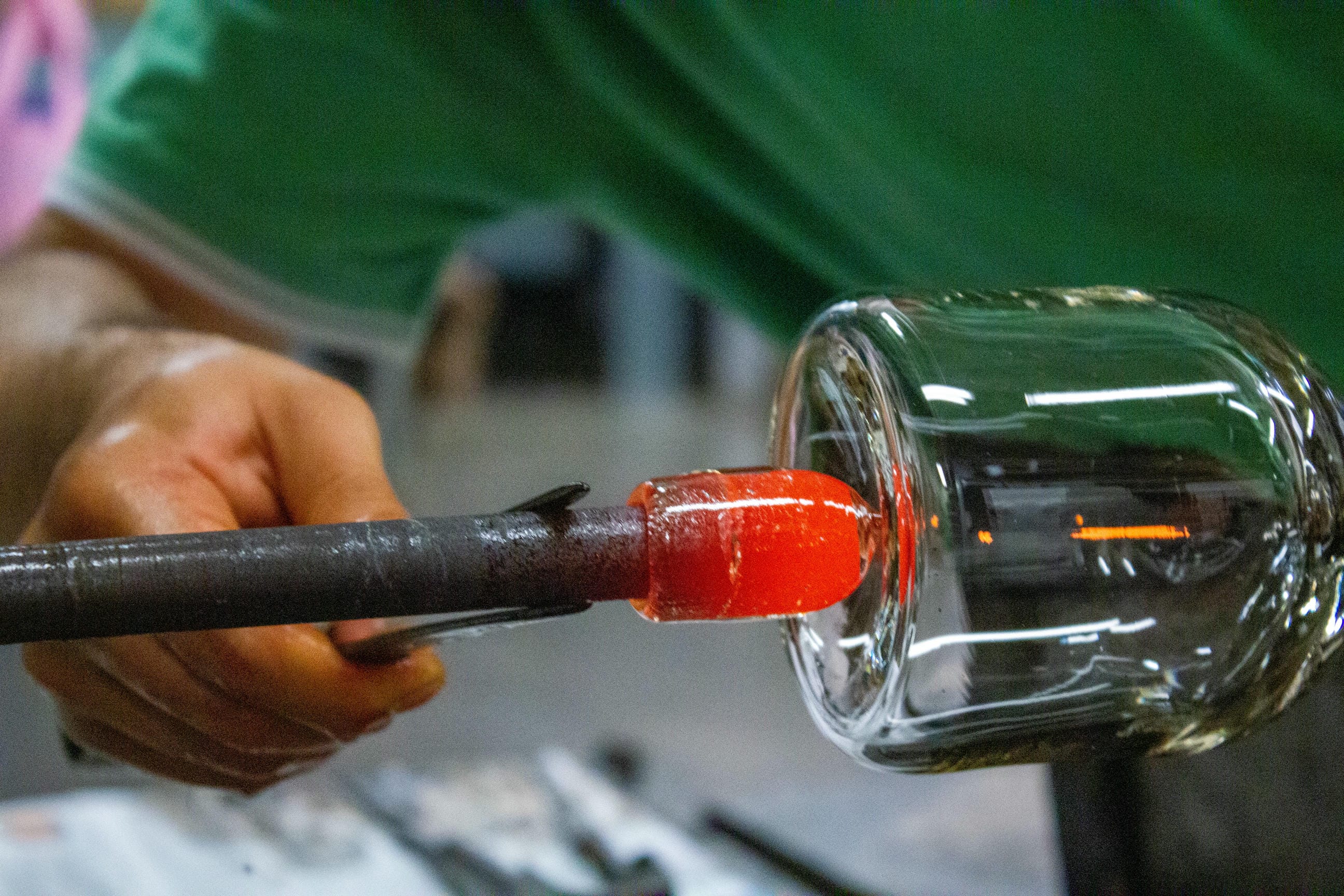Glassblowing projects
- CategoryFor fun
- Project dateSpring 2022
- Skills usedGlassblowing
About this project
I was fortunate enough to get into the glassblowing class my sophomore year. There I learned the basics of glassblowing, creating paperweights, cups, and ornaments over the course of 8 weeks.
I thought it was really interesting working with glass because it's an amorphous solid, so it behaves very differently than working with metal. Timing and heat is everything, because if the glass gets too cool, stress accumulates and the piece can shatter. You might be familiar with this concept from the Prince Rupert's drop, which are produced by dropping molten glass drops into cold water. These drops are very strong at the bottom, even taking a hammer's blow, because of the compressive strength that accumulates as the large drop cools. However, the small tail is snapped easily, and when this happens, the entire thing shatters. We were fortunate enough to see this famous experiment happen in-person with a drop we made together.
Because the piece is probably not uniform thickness, it probably also won't heat evenly, meaning you're in a constant balancing act of making sure the piece is hot enough but not so hot it becomes unstable and falls right off the punty (the stick that glass sits on). In order to keep it centered, you must keep the piece rotating at all times, strategically timing when you need to stop to move it out of the furnace and onto the workbench.
In order to make different shapes, you need to use a combination of jacks, shears, paddles, and blocks.
Because the paddles and blocks are made of wood, they must be soaked in water to prevent them from catching fire.
There are also some really neat molds you can place the molten glass into to give them patterns. In order to add color,
you roll the clear glass in frits, small grains of colored glass which coat the exterior of the piece. As you heat and rotate the piece,
the color spreads in unique ways. Here are some photos I took during the class which might give you a better idea what this process looked like.
Not every piece needs to be blown (for example, paperweights are often solid), but the ornaments and glasses do need to be inflated. Since this class was during the pandemic and we were wearing masks, we used a pump system triggered by a foot pedal instead of blowing directly into the blowpipes.
You remove the glass pieces from the punty by taking advantage of the thermal stress I mentioned; you thin out the area where you want it to break at, and then by applying a few drops of water, the area cools and stress accumulates there. Then, you can give the punty a small tap with the jacks and the piece falls right off!
I found glassblowing to be both mildly stressful and incredibly therapeutic. It truly requires all your concentration, since oftentimes a single mistake could mean your piece looking entirely different or even breaking altogether. It was also especially challenging because I'm left-handed, but because of the bench setup, I had to work with my right. But despite all the challenges, I found the thought oddly calming, because even if I made a mistake, I knew there was nothing for me to do but keep moving forward and make the best of it. And even if a piece didn't turn out the way I had expected, I loved it because it was mine.



